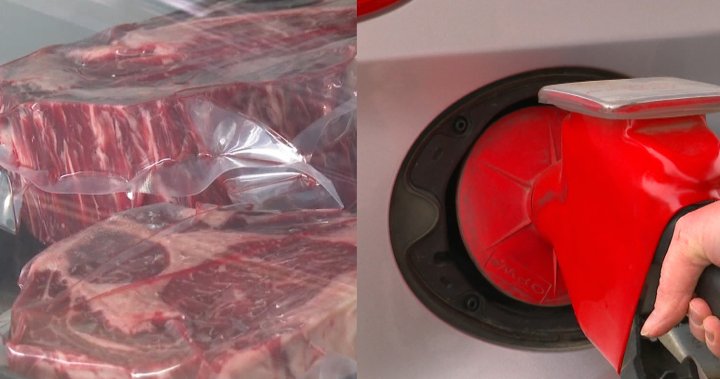In a welcome reprieve for Alberta households, the province’s annual inflation rate dropped significantly in April 2024, offering residents some much-needed breathing room amid persistent cost-of-living concerns. The latest figures from Statistics Canada reveal Alberta’s inflation rate fell to 2.2 percent last month—a substantial decrease from March’s 3.2 percent—marking the largest month-over-month inflation decline in the country.
Behind this encouraging shift lies a complex interplay of market forces. Most notably, gasoline prices across Alberta plunged by 9.1 percent compared to April 2023, following similar downward trends observed throughout March. This petroleum price decline has rippled through the economy, easing pressure on transportation costs and indirectly affecting various consumer goods.
“The April figures represent the most significant inflation moderation we’ve seen in Alberta since the post-pandemic economic recovery began,” notes Dr. Sarah McKinnon, senior economist at the University of Calgary. “What’s particularly encouraging is that the decrease isn’t limited to volatile energy prices alone.”
Indeed, beyond fuel costs, Alberta consumers experienced relief across several essential spending categories. Food prices, which had been rising steadily for months, showed signs of stabilization with a modest 1.8 percent year-over-year increase—substantially below the national average of 2.3 percent. Housing-related expenses also moderated, with shelter costs increasing by 4.6 percent compared to April 2023, down from March’s 5.1 percent annual increase.
The provincial data aligns with broader national trends, as Canada’s overall inflation rate fell to 2.7 percent in April, down from 2.9 percent in March. However, Alberta’s inflation rate now sits significantly below the national average, potentially positioning the province more favorably for economic growth in the coming quarters.
For everyday Albertans, these statistics translate to tangible relief at checkout counters and gas pumps across the province. In Edmonton, the consumer price index decreased by 0.6 percent from March to April, while Calgary saw a 0.4 percent drop during the same period.
“After months of tightening our family budget, it’s encouraging to see prices finally moving in the right direction,” says Calgary resident Jennifer Morales, a mother of three who operates a small business. “The lower gas prices alone have saved us about $75 this month compared to what we were paying earlier this year.”
Despite the positive momentum, business analysts caution that certain sectors continue to experience elevated price pressures. Restaurant meals rose 4.5 percent compared to last year, while personal care services increased by 5.2 percent—both outpacing the overall inflation rate.
Moreover, the Bank of Canada remains vigilant as it evaluates the sustainability of inflation’s downward trajectory. The central bank has maintained its policy interest rate at 5 percent since January, waiting for clearer signals that inflation is moving consistently toward its 2 percent target before considering rate cuts.
“We’re seeing encouraging developments in Alberta’s inflation picture, but the Bank of Canada will likely want to see several more months of consistent moderation before adjusting monetary policy,” explains Martin Côté, chief economist at Western Financial Group. “The service sector inflation remains somewhat sticky, which could complicate the overall outlook.”
For Alberta’s provincial government, the improved inflation figures provide an opportunity to reassess cost-of-living support programs announced earlier this year. Premier Danielle Smith indicated in recent statements that her government would continue monitoring economic indicators closely while maintaining targeted relief programs for vulnerable populations.
As summer approaches, economists will be watching closely to see if this inflation moderation continues or if seasonal factors might reverse some of April’s gains. The question now facing Albertans and policymakers alike: Does this significant drop in inflation represent a temporary fluctuation or the beginning of a sustained return to price stability that could finally ease the financial strain on Alberta households?











